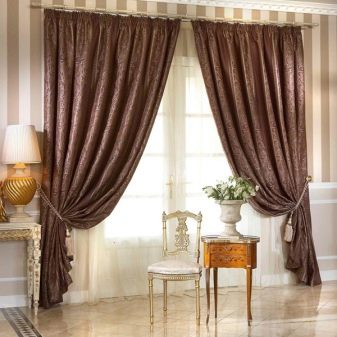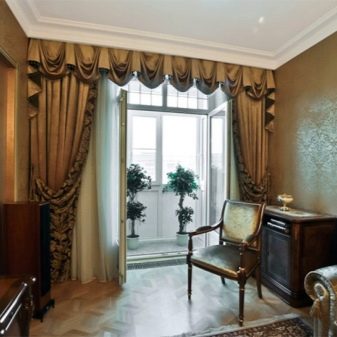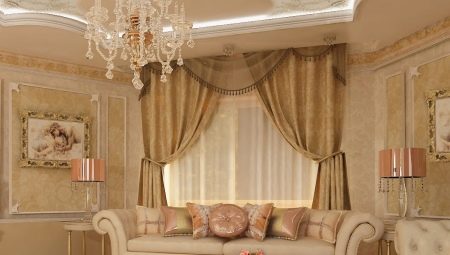Classic style is one of the main directions in the interior design of apartments and houses. When designing a living room in this style, you must choose the appropriate curtains. They are an important element of the decor, without them, any room will look uncomfortable, empty and sad, despite the presence of good furniture or thoughtful design.
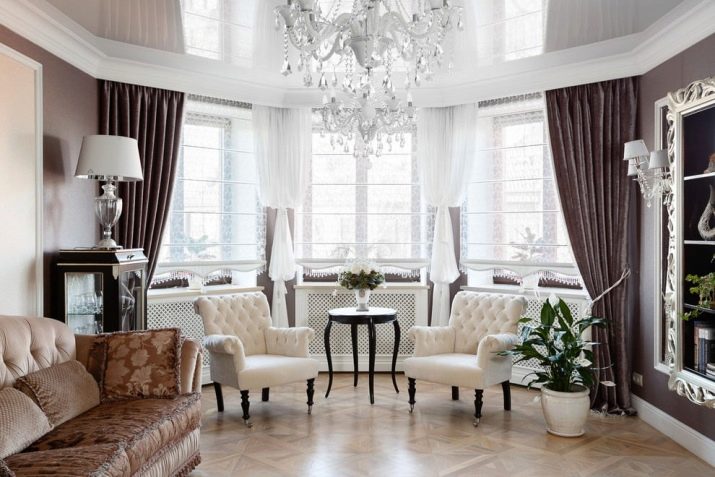
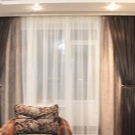
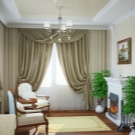
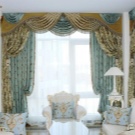
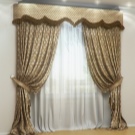
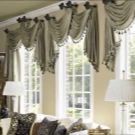
Features
Classic curtains in the living room are appropriate at all times. They are suitable for those people who doubt the choice, love stability or do not really accept everything new and unusual.
Basically, curtains in the style of the classic are made of two or three types of fabrics. These are dense curtains, thin transparent tulle, additional elements in the form of lambrequins, draperies and swagas are possible.
Typically, fabrics are selected monophonic or with an unobtrusive pattern, that is, it is desirable to exclude bright artsy shades and patterns. This is not acceptable for a classic style.
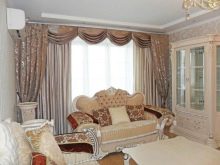
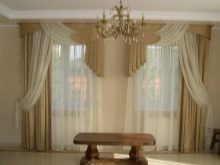

Dense curtains usually gather in the daytime on the sides of the window opening. For this, tricks of various shapes, twisted cords, ribbons are used. Also, fringes, brushes, and gold embroidery are often used for decoration. That is, the general view gives the impression of luxury, material prosperity, as it was before, several centuries ago, when this style was born.
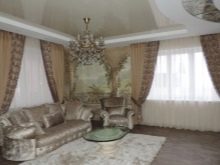
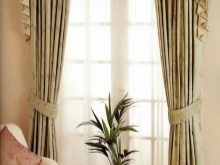
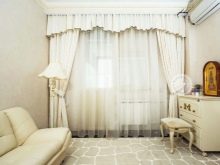
It is worth noting that Currently, the use of various directions is allowed in interior design, and when choosing the style of curtains for the hall, you can additionally use or remove some elements. For example, replace tight curtains with a thin tulle, and close the window with Roman curtains, which can be raised during the day and lowered at night.
Or make English curtains, which can also be draped up with tapes and cords. Or even combine a classic set of curtains, but in a simpler minimalist design: one color, a minimum of folds and decor, but at the same time there are curtains and tulle.

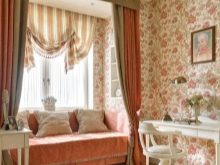
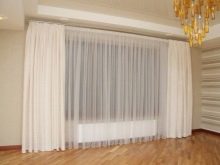
If, for example, the curtains are sewn for the living room in a private house, where it is possible not to close the window from prying eyes of strangers, and you want to fill the room with a lot of light, then you can not use tulle in the classic version, but simply modify the curtains as you wish.
There are a lot of options, it is only important to observe the harmonious image of the room as a whole, and so that the owners would like the resulting atmosphere.
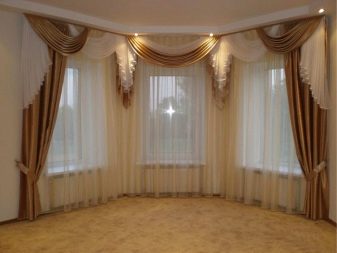
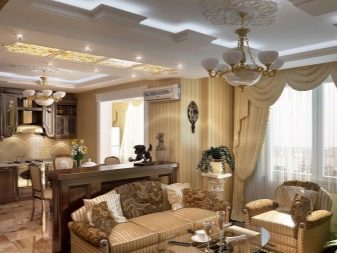
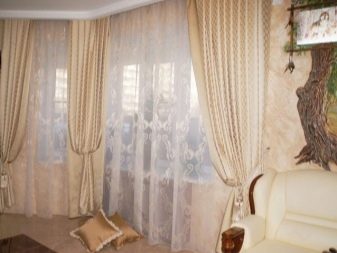

Fabrics
For sewing classic curtains, it is better to choose solid natural fabrics. But it should be noted that such fabrics are more susceptible to wear and they are very labor intensive to maintain.
Now there is a huge selection of synthetic and artificial textile material, which is much easier to care for, while they are not inferior in appearance to natural fabrics and more affordable. Blended fabrics are also sold, where, along with natural ones, artificial or synthetic fibers are used. Such fabrics are also much easier to wash, and they do not crease so much.
It is especially worth noting such a fabric as a reaper - you can not iron it, such curtains greatly facilitate life.
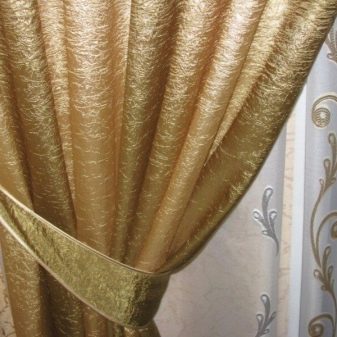
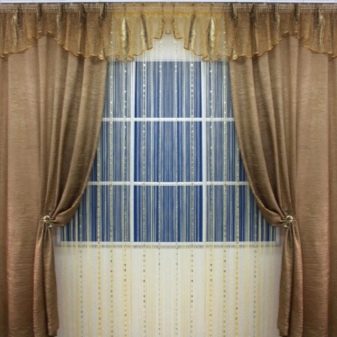
Drapery fabrics (they are called so) come in different densities.. But if the fabric is not very dense, then you can duplicate the lining. For very luxurious options, curtains can be offered. velvet, brocade, taffeta, chenille. Such curtains are usually designed to create an atmosphere of luxury, and they are usually sewn in such a way that they fold beautifully and voluminously on the floor.
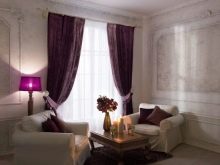
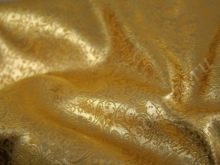
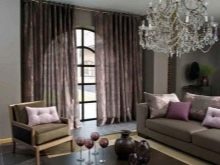
At all, the issue of the density of the folds is also important for creating the desired image of the room. To do this, you need to pay attention to the size of the hall and correctly correlate them with the volume and style of the curtains. For example, if the living room is not very spacious, it would be a mistake to choose curtains with a huge number of volume folds and additional decor, as this will visually scrub an already small area.
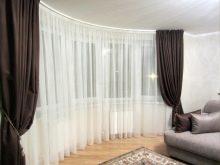
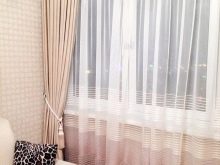
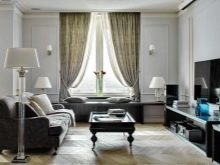
Tulle can be made from fabrics such as veil, organza, kisei, and you can also use silk, chiffon, cambric and similar thin transparent or translucent materials.
Decor details are usually sewn from the same fabric as and curtains, and tulle, but sometimes they use another kind of finishing kind of canvas. And also, when sewing some types of lambrequins, cushioning materials are needed, which additionally compact the fabric and give the necessary shape.
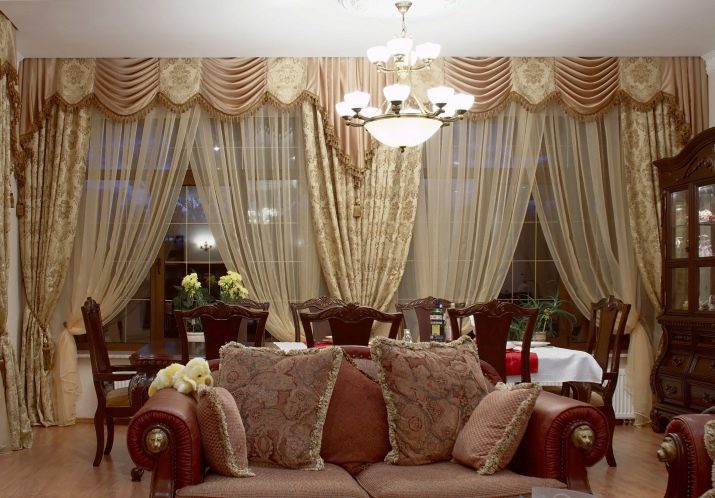
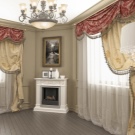
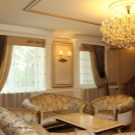
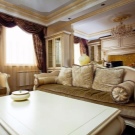
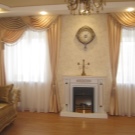
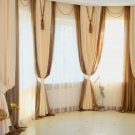
Colors and patterns
There are several “golden” design rules that are used by professional fashion designers and designers.
- When choosing a color you need to remember that ideally, any ensemble should have no more than three colors. The first - the main one, makes up the majority (more than 50%), the second - additional, close in hue, about half of the main one, and the third - serves as a small bright spot.
Therefore, the curtains in the hall in most cases are an addition to the walls and furniture, and it is desirable that they be the same color scheme.
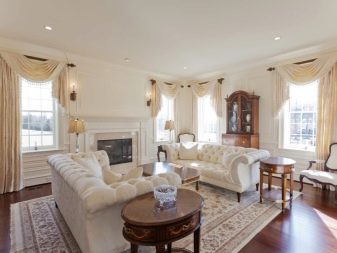
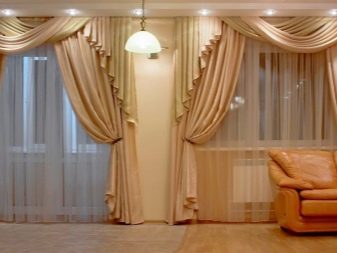
- The following rule applies to drawing. Vertical stripes and ornaments visually increase height, horizontal stripes increase width. A large picture visually reduces space, a small picture, as well as a solid color - expand it. That is, you need to consider the size of the room, windows and the height of the ceiling.

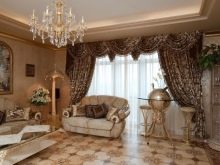
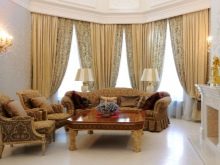
- It should be noted that different colors and shades affect the visual perception of space in different ways. Light - visually expand the space, dark, on the contrary, narrow. The red spectrum of colors (these are all shades of yellow, red, brown) creates a feeling of warmth, the blue spectrum - coolness.
That is, depending on which side of the world the windows of the room go, due to the color scheme of the interior, you can create a feeling of comfort in the room, create a feeling of spaciousness or, conversely, a feeling of a warm, cozy corner.
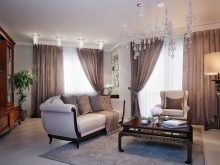

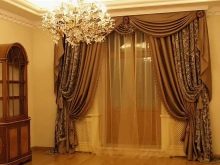
It should be noted nevertheless that the predominant color when creating classic curtains is beige and all its shades. Perhaps this is due to the fact that in the classic interior there is wooden furniture. And also personal preferences cannot be canceled, perhaps someone likes, for example, white curtains with red poppies.
For modern design options, it’s quite fabric with various patterns, checkered, striped is allowed. In this case, it is important to maintain the overall style of the room.
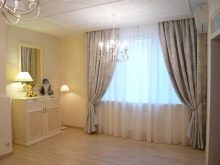
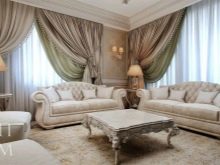
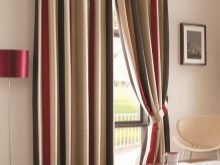
Mounts and decor
For the design of the living room windows in the classical style, two- or three-row cornices are needed. Layering is the hallmark of such curtains. Tulle is attached to the first row, then curtains, and the third layer is the finishing details, such as lambrequins, draperies, swagas. But sometimes, especially if the living room is not very large, or there is no desire to overload the window, many refuse lambrequins, and the set consists only of curtains and tulle.
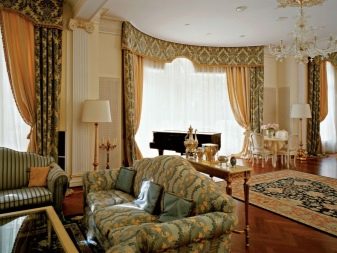
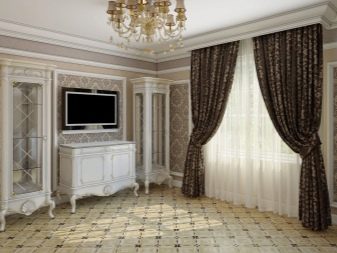
The most common type of fastening is a cornice in the form of a round bar with rings. Drapes can also be attached to such a rod using eyelets - these are special rings to create holes in the fabric, and a cornice is threaded into these holes. In the same way, you can fasten the curtains, if the upper part of the curtains is decorated in the form of a drawstring, or sew stitches from the same fabric as the curtains.
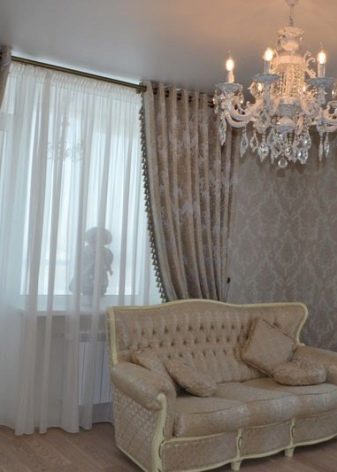

The easiest mounting option is ceiling cornices with hooks. For fastening on such eaves onto the upper part of the curtains and tulle, a special braid with loops is sewn from the inside.
Such ceiling cornices, made from wall to wall, allow you to visually increase the space from the side of the window.
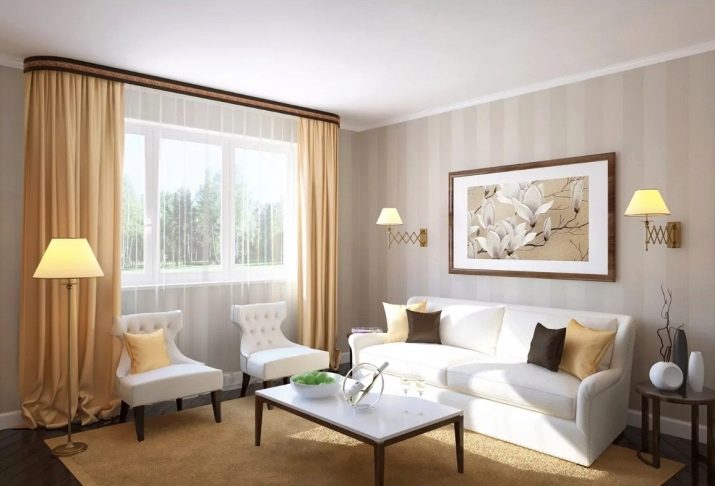
For decorating curtains, all kinds of details are used: fringe, brushes and brushes, twisted cords, braid embroidered with gold or silver, beads, ribbons. And also in the most different variations it is possible to issue grips. The main thing is to observe the measure and try so that in general everything looks harmonious.
It is this finish that serves as the hallmark of classic curtains, as they should give the living room a luxurious, rich, solemn appearance.
